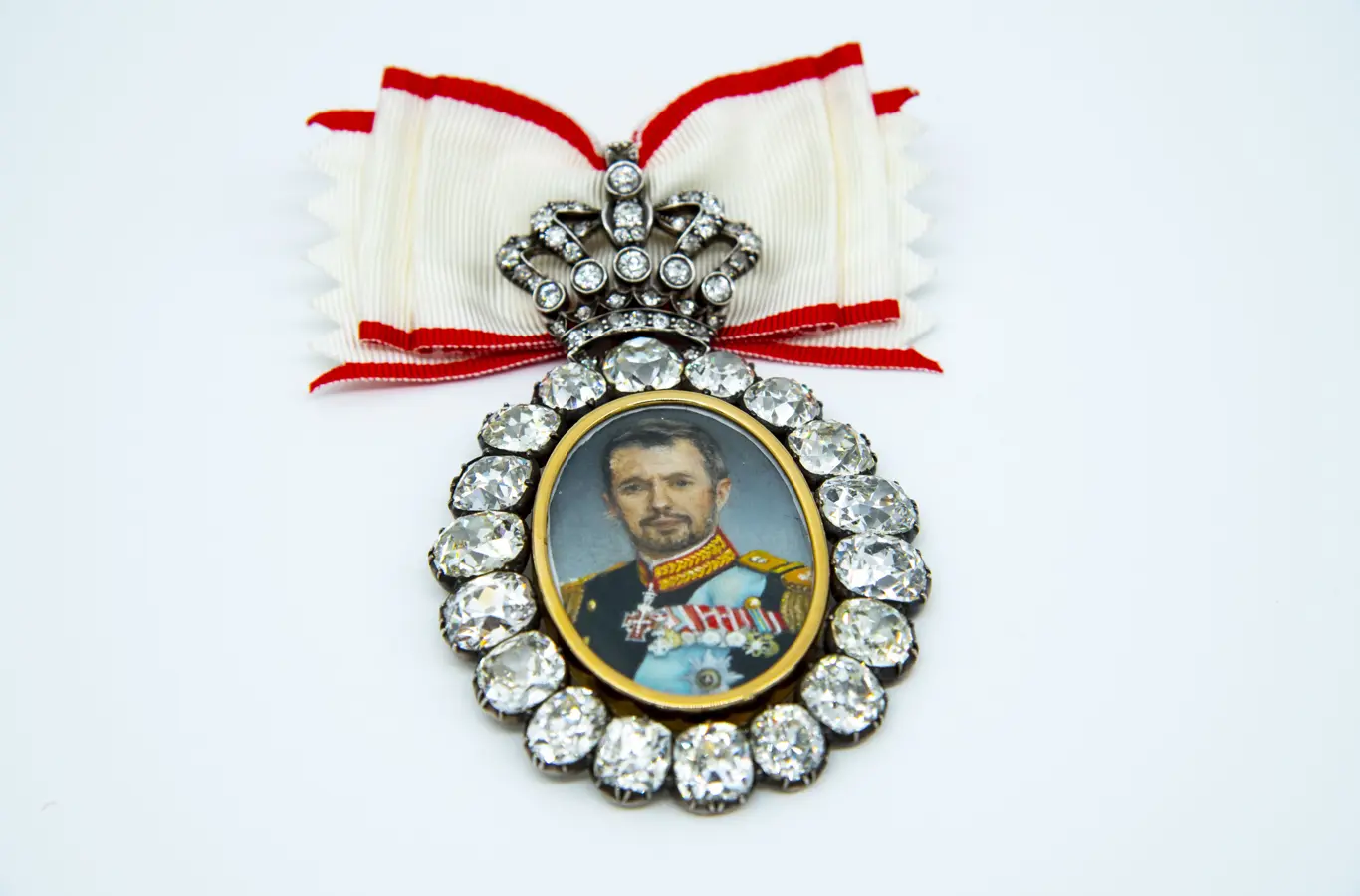
The diamond frame is a part of the jewellery in The Danish Royal Property Trust.
In formal gala, HM The Queen wears an oval frame with HM The King’s portrait in the Order of Dannebrog’s red-white silk bow in a brooch pin. The frame in white gold is ornamented all the way around with a wreath of, in all, 18 very large ‘old cut’ diamonds and has a Danish royal crown in diamonds at the top.
The Danish Royal Property Trust’s diamond frame originally belonged to Empress Amélie of Brazil, who wore it with a portrait of her husband, Emperor Pedro I of Brazil. Amélie married the emperor in 1829 and died in 1873, after which her older sister, Queen Josefina of Sweden, inherited the frame. Josefina allowed the Brazilian diamond frame to be passed on further to her grandchild, Crown Princess Lovisa of Denmark, married to the then Crown Prince Frederik (VIII). The frame then had a Danish diamond crown added at the top and, after Queen Lovisa, was worn by Queen Alexandrine, then Queen Ingrid, but for all of the queens concerned only until the death of their spouses, after which it was passed on to the daughter-in-law.
When HM Queen Margrethe used the frame, she wore it with a portrait of her father, Frederik IX, while The Queen now wears it with a portrait of her spouse, Frederik X. The new portrait of The King was painted in connection with the succession of the throne in 2024 by the British artist Tom Mulliner, who masters the difficult art of painting the quite small miniature portraits.
By wearing the diamond frame with the sovereign’s portrait, The Queen follows an old tradition. Portrait jewellery in stone and metals are known from Antiquity and the Renaissance, but when the painted miniature portrait developed around 1600, created with marten hair brushes on thin ivory or parchment, costume jewellery with a painted portrait in a pendant or on a pin became quite widespread. During the 1600s, the jewellery evolved into a type of order decoration with frame and crown, trimmed with precious stones and pearls and worn on a chain – later in a gala bow.
The costume jewellery, worn on the breast with the monarch’s portrait, was reserved for an increasingly narrow circle of persons during the 1700s, and the first Danish queen who had the honour of wearing the king’s breast portrait was Frederik IV’s second wife, Anna Sophie, born Reventlow. From then on, it became common for the queens, when they allowed themselves to be portrayed in gala in paintings and later in photographs, to wear the king’s portrait in a crowned diamond frame: a centuries-old tradition which The Queen now continues.
